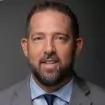- within Immigration topic(s)
- with readers working within the Insurance and Securities & Investment industries
The U.S. Department of Labor ("DOL") has published additional guidance for employers covered by the Families First Coronavirus Response Act ("FFCRA"), which goes into effect on April 1, 2020. The DOL's Questions and Answers ("Q&A") provide some much-needed clarity for employers regarding the FFCRA, as summarized below.
Recordkeeping, Documentation and Certification
The Q&A explain that employers intending to claim a payroll tax credit for payment of sick leave or expanded family and medical leave must keep appropriate documentation in accordance with applicable IRS forms, instructions and procedures, which have yet to be developed. Employers who grant paid FFCRA leave without obtaining and keeping such documentation may not be eligible to receive a tax credit. Employers are not required to provide leave to employees if materials sufficient to support the applicable tax credit have not been provided.
The Q&A further clarifies the kind of documentation employers may require employees to provide in support of requested leave, such as the source of any quarantine or isolation order, the name of the health care provider who has advised the employee to self-quarantine, or a notice of school closure or lack of child care. Appropriate documentation should include the employee's name; the reason for the requested leave; a statement that the employee is unable to work, including telework, for that reason; and the date(s) for which leave is requested.
The Q&A also clarify that all other existing certification requirements under the FMLA remain in effect if an employee takes leave for one of the existing qualifying reasons under the FMLA. For example, if an employee takes leave beyond the two weeks of emergency paid sick leave because their medical condition for COVID-19 reasons rises to the level of a serious health condition, the employee must continue to provide medical certifications under the FMLA as required by the employer.
Teleworking and Inability to Work
The Q&A provide that employees may telework when the employer allows the employee to perform work while at home or at a location other than the normal workplace. Employees must receive normal wages for telework, and telework is not compensated under the paid leave provisions of the FFCRA.
The Q&A also explain that being "unable" to work or telework for purposes of the FFCRA means that the employer has work available, but one of the specified paid reasons for leave under the FFCRA prevents the employee from being able to perform that work. If the employer offers the ability to work a normal number of hours, but outside the employee's regular schedule, then the employee is able to work and leave is not necessary unless (a) a COVID-19 reason prevents the employee from working that schedule, (b) the employee cannot work the required hours because of a qualifying reason for paid sick leave, or (c) the employee cannot telework due to the need to care for a child. To the extent an employee is able to telework while caring for a child, paid sick leave and expanded family and medical leave is not available.
Intermittent Leave
The Q&A explain that employers are not required to provide intermittent leave under the FFCRA to employees who either telework or work onsite. However, an employer and an employee may agree for the employee to take paid sick leave or expanded family and medical leave intermittently while the employee is teleworking. Such employees may take intermittent FFCRA leave in any increment, provided that the employer and employee agree to the schedule.
Employees who do not telework, but rather work at their usual worksite, may take intermittent emergency paid sick leave with employer approval only if the qualifying reason relates to the need to care for a child whose school or childcare is closed, or whose child care provider is unavailable because of COVID-19. Employees working onsite and who take emergency paid sick leave for other COVID-19 reasons must take paid leave in full-day increments. As such, once the employee begins paid sick leave for any reason other than to care for a son or daughter whose daycare or school is unavailable due to COVID-19, the employee must continue to take paid sick leave each day until the employee either (1) uses the full amount of paid sick leave or (2) no longer has a qualifying reason for taking paid sick leave. This limit is imposed because if the employee is sick or possibly sick with COVID-19, or caring for an individual who is sick or possibly sick with COVID-19, the intent of FFCRA is to provide such paid sick leave as necessary to keep that employee from spreading the virus to others.
Employees who work their normal number of hours, but outside of normally scheduled hours (e.g., late at night) are not considered to be taking any leave.
In all instances, the DOL encourages both employers and employees to collaborate to achieve maximum flexibility and meet mutual needs, and the DOL supports voluntary arrangements that combine telework and intermittent leave where available.
Worksite Closures and Furloughs
If an employer closes a worksite or furloughs employees, either permanently or temporarily, before or after April 1, 2020, employees are not eligible to receive paid sick leave or expanded family and medical leave under the FFCRA. This is true whether the employer closes the worksite or furloughs employees due to lack of business or because it was required to close or furlough pursuant to a federal, state or local directive. Although not stated directly by the DOL, this presumably includes furloughs, layoffs or closures due to a directed health or shelter-in-place order. If the employees later resume work, employees would then be eligible for paid sick leave or expanded family and medical leave thereafter as warranted.
If an employer closes the worksite while an employee is on paid sick leave or expanded family and medical leave under the FFCRA, the employee must be paid for any such leave used before the worksite was closed. As of the date of the worksite closure, however, employees are no longer entitled to paid FFCRA leave.
The Q&A further note that employees whose worksite has been closed, or who have been furloughed, may be eligible for unemployment benefits. However, employees may not receive both unemployment benefits and paid leave, such as leave paid pursuant to an employer policy or state or local requirements.
Hours Reductions
The Q&A explain that if an employee's scheduled work hours are reduced because the employer does not have work for the employee to perform, the employee may not use paid sick leave or expanded family and medical leave for the hours that the employee is no longer scheduled to work. This is because the employee is not prevented from working those hours due to a COVID-19 qualifying reason, even if the reduction in hours is related to COVID-19. Employees, however, may take paid sick leave or expanded family and medical leave if a COVID-19 qualifying reason prevents the employee from working their full schedule. The amount of leave to which an employee is entitled is computed based on the employee's work schedule before it was reduced.
The DOL recently clarified additional flexibility to the states, and some states extend partial unemployment benefits to workers whose hours or pay have been reduced. Therefore, employees should contact their state workforce agency or state unemployment insurance office for specific questions about their eligibility.
Concurrent or Supplemental Use of Pre-Existing Benefits and Sick Leave
Under the FFCRA, only the employee may choose to use existing paid vacation, personal, medical or sick leave before taking FFCRA paid leave. He or she is not required to do so, and an employer may not require the use of benefits acquired under a paid leave policy. However, an employer and employee may both agree to allow simultaneous use, and leave taken under an employer's paid leave policy may be used to supplement pay up to the employee's normal earnings if the employer agrees. For example, an employee receiving 2/3 of his or her normal earnings from paid sick leave or expanded family and medical leave under the FFCRA may elect to use preexisting employer-provided paid leave to get the additional 1/3 of the employee's normal earnings. An employer is not required to allow this concurrent and supplemental use, and if the employer does not want to allow it the employee must choose which leave to take.
An employer is not entitled to a tax credit for any paid sick leave or expanded family and medical leave in excess of the limits as set forth under the Emergency Paid Sick Leave Act and the Emergency Family and Medical Leave Expansion Act.
Definition of "Son or Daughter"
The original definition of "son or daughter" in the FMLA still applies. A "son or daughter" is a biological, adopted, foster or step child, as well as legal ward or a child for whom the adult is acting as "in loco parentis." In broad terms, "in loco parentis" means a relationship where an adult puts himself or herself in the situation of a parent by assuming and discharging the obligations of a parent to a child. It also includes a biological, adopted, foster, step child, legal ward or a child to whom an employee stands "in loco parentis" who is over the age of 18 if he or she is incapable of self-care because of a mental or physical disability.
Disability is defined by the Americans with Disabilities Act and may include conditions that are not currently manifesting. Incapable of self-care means that the adult son or daughter requires active assistance and supervision to provide daily self-care in three or more the "activities of daily living," such as grooming, hygiene, dressing, eating, cooking, cleaning, shopping and transportation. This determination is fact specific based on all relevant factors.
Job Restoration Rights
The DOL has clarified that employers are required to provide the same (or near equivalent) job to an employee who returns to work following paid sick leave or expanded family and medical leave under the FFCRA. This is the same job protection required under the FMLA, and an employer may not fire, discipline or otherwise retaliate against an employee for taking leave under the FFCRA. This job protection, however, is subject to some limitations:
- There is no protection if an employer takes action that would have affected the employee regardless of whether they took leave. For instance, if an employer closes an employee's worksite, there is no job protection, but the employer must be able to demonstrate the laid-off employee would have been laid off even if the employee had not taken leave;
- An employer may also refuse to hire back a highly compensated "key" employee, defined as a salaried, FMLA-eligible employee who is among the highest-paid 10% of the employer's employees within 75 miles, and the employer demonstrates that substantial and grievous economic injury to its operations would result from the restoration; or
- An employer has fewer than 25 employees, and the employee took leave to care for a child whose school or place of care was closed, provided all four of the following hardship conditions exist:
-
- The employee's position no longer exists due to economic or operating conditions that affect employment and due to COVID-19 reasons during the period of the employee's leave;
- The employer made reasonable efforts to restore employee to the same or an equivalent position;
- The employer makes reasonable efforts to contact the employee if an equivalent position becomes available; and
- The employer continues to make reasonable efforts to contact the employee for one year beginning either on the date the leave related to COVID-19 reasons concludes or the date 12 weeks after the employee's leave began, whichever is earlier.
Leave Under the Emergency Family and Medical Leave Expansion Act
An employee's entitlement to paid sick leave under the Emergency Paid Sick Leave Act is not a form of FMLA leave and may be taken irrespective of how much leave has been taken under the FMLA. The Q&A clarify, however, that an employee's eligibility for expanded family and medical leave depends on how much leave the employee has already taken during the 12-month FMLA period. In other words, an employee may take a total of 12 workweeks for FMLA or expanded family and medical leave reasons during a 12-month period, and thus, if an employee has already taken FMLA before April 1, 2020, the employee may only take the portion of FMLA leave remaining for a qualifying reason, including any FMLA qualifying reason under the FFCRA. If no leave remains, the employee is not entitled to additional time off under the FMLA.
However, employees are entitled to paid sick leave under the Emergency Paid Sick Leave Act regardless of how much leave they have taken under the FMLA. Paid sick leave is not a form of FMLA leave and therefore does not count toward the 12 workweeks in the 12-month period cap, except that if an employee takes paid sick leave concurrently with the first two weeks of expanded family and medical leave, which may otherwise be unpaid, then those two weeks do count towards the 12 workweeks in the applicable 12-month period.
Health Coverage Waiting Periods
The requirements for eligibility for employer-provided group health coverage, including any requirement to complete a waiting period, apply in the same way as if the employee continued to work, including that the days on paid sick leave count towards completion of the waiting period. If, under the terms of the plan, an individual can elect coverage that becomes effective after completing the waiting period, the health coverage must take effect once the waiting period is complete.
Public Employee Rights
Public sector employees, with very limited exceptions that may be excluded by the Office of Management and Budget, are entitled to paid sick leave. The DOL clarifies employees are probably entitled to paid sick leave if, for example, they work for the government of the United States, a State, the District of Columbia, a Territory or possession of the United States, a city, a municipality, a township, a county, a parish, or a similar government entity subject to the exceptions below. The Office of Management and Budget (OMB), however, has the authority to exclude some categories of U.S. Government Executive Branch employees from taking certain kinds of paid sick leave. As such, the DOL encourages federal employees to seek guidance from their employers before taking leave.
Definitions of "Health Care Provider" and "Emergency Responder"
For the purposes of employees who may be exempted from paid sick leave or expanded family and medical leave by their employer under the FFCRA, the DOL clarified that a "health care provider" is anyone employed at
- any doctor's office, hospital, health care center or clinic;
- post-secondary educational institution offering health care instruction or medical school;
- local health department or agency, nursing facility, retirement facility, nursing home or home health care provider; or
- any facility that performs laboratory or medical testing, pharmacy, or any similar institution, employer or entity.
The Q&As further expanded the definition of "health care provider" to include any permanent or temporary institution, facility, location or site where medical services are provided that are similar to the above institutions.
A "health care provider" also includes any individual employed by an entity that contracts with any of the above institutions, employers or entities to provide services or to maintain the operation of the facility. This also includes anyone employed by any entity that provides medical services, produces medical products or is otherwise involved in the making of COVID-19 related medical equipment, tests, drugs, vaccines, diagnostic vehicles or treatments. A "health care provider" further includes any individual whom the highest official of a state or territory, including the District of Columbia, determines is a health care provider necessary for that state's or territory's or the District of Columbia's response to COVID-19.
The Q&As also broadly define "emergency provider" to make it more exclusive. An "emergency responder" is an employee who is necessary for the provision of transport, care, health care, comfort and nutrition of such patients, or whose services are otherwise needed to limit the spread of COVID-19. Emergency responders include, but are not limited to, military or national guard, law enforcement officers, correctional institution personnel, fire fighters, emergency medical services personnel, physicians, nurses, public health personnel, emergency medical technicians, paramedics, emergency management personnel, 911 operators, public works personnel and persons with skills or training in operating specialized equipment or other skills needed to provide aid in a declared emergency, as well as individuals who work for such facilities employing these individuals and whose work is necessary to maintain the operation of the facility. An "emergency responder" also includes any individual whom the highest official of a state or territory, including the District of Columbia, determines is an emergency responder necessary for that state's or territory's or the District of Columbia's response to COVID-19.
The DOL clarifies that employers who employ a health care provider or an emergency responder are not required to pay such employee paid sick leave or expanded family and medical leave on a case-by-case basis. It, however, also encourages employers to be judicious when using the definitions of "health care provider" and "emergency responder" from the provisions of the FFCRA to minimize the spread of COVID-19.
Small Business Exemption
An employer, including a religious or nonprofit organization, with fewer than 50 employees (small business) is exempt from providing (a) paid sick leave due to school or place of care closures or child care provider unavailability for COVID-19 reasons, and (b) expanded family and medical leave due to school or place of care closures or child care provider unavailability for COVID-19 reasons where doing so would jeopardize the viability of the small business as a going concern.
The DOL clarified that a small business may claim this exemption if an authorized officer of the business has determined:
- The provision of paid sick leave or expanded family and medical leave would result in the small business's expenses and financial obligations exceeding available business revenues and cause the small business to cease operating at a minimal capacity;
- The absence of the employee or employees requesting paid sick leave or expanded family and medical leave would entail a substantial risk to the financial health or operational capabilities of the small business because of their specialized skills, knowledge of the business or responsibilities; or
- There are not sufficient workers who are able, willing and qualified, and who will be available at the time and place needed, to perform the labor or services provided by the employee or employees requesting paid sick leave or expanded family and medical leave, and these labor or services are needed for the small business to operate at a minimal capacity.
A small business that meets the three criteria listed above and that has an employee who wants to take sick leave due to school or place of care being closed or child care is unavailable for COVID-19 reasons is exempt from mandated paid sick leave or expanded family and medical requirements. The DOL encourages employers and employees to collaborate to reach the best solution for maintaining the business and ensuring employee safety.
The content of this article is intended to provide a general guide to the subject matter. Specialist advice should be sought about your specific circumstances.
[View Source]






